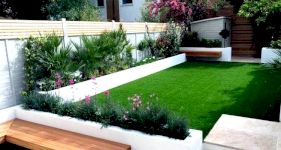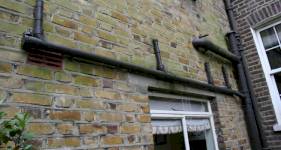Garden Renovation Costs
- The average cost of garden renovations is around £4,000.
- Garden renovations will usually take between 1 to 7 days to complete.
- A complete breakdown of garden renovation costs, as well as various types of outdoor landscaping jobs you might want done.
- A look at how long garden renovations generally take, and what's involved in the project.
- How to find and hire a professional gardener near you.
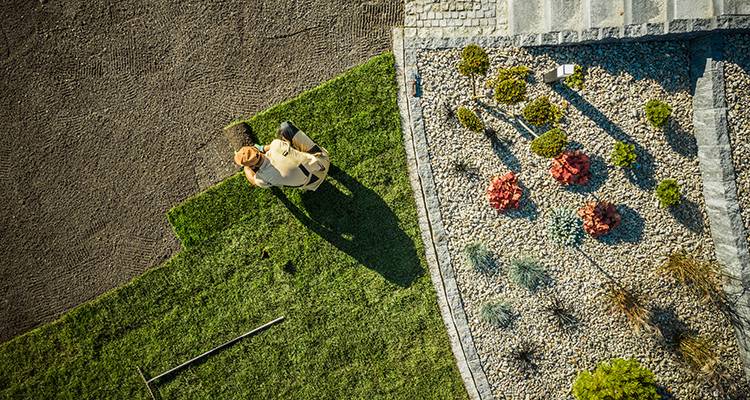
£4,000
Table of Contents
- How Much Does It Cost to Renovate a Garden?
- Garden Renovation Costs (Supply Only)
- Additional Garden Renovation Costs
- Garden Renovation Labour Costs and Timescales
- Cost Factors of Renovating a Garden
- What's Involved in Garden Renovation?
- Can I Renovate a Garden Myself?
- Building Regulations & Planning Permission for Garden Renovation
- Types of Garden Renovations
- Checklist: Hiring a Garden Renovator Near You
- FAQs
How Much Does It Cost to Renovate a Garden?
Average garden renovation costs are hard to pin down as they can fluctuate wildly.
Garden reno costs will rise or fall depending on the following:
- Your garden size and current condition
- The scope of your garden project
- Location and ease of access

So, what's a general garden renovation cost?
Broadly speaking, you can expect a garden renovation to cost in the region of £4,000.
Design specifics can make those costs jump up:
- Hard landscaping, such as installing patios, decking, or walls.
- Adding lighting, water features, or using high-end materials.
- Significant groundwork, such as levelling, correcting/adding drainage solutions.
- If you require mature trees to be felled and tree stump removal.
Now we have a broad understanding of garden renovation prices, let's take a closer look at some project-specifics.
Do I need to improve the drainage of my clay soil before laying turf?
Garden Renovation Prices
| Job | Price |
|---|---|
| Turfing | £750 – £1,000 |
| Artificial grass installation | £60 – £75 |
| Pruning | £450 – £850 |
| Laying a new patio | £1,750 – £2,600 |
| Installing a garden fence | £900 – £1,200 |
| Installing decking | £1,100 – £3,250 |
Garden Renovation Costs (Supply Only)
If the cost of redesigning your garden is a deterrent, you can do some of the work yourself.
Doing this will cut down your labour costs, leaving you with supply costs only. There aren't many expensive supply costs, but you will need quite a few tools to complete a garden renovation project.
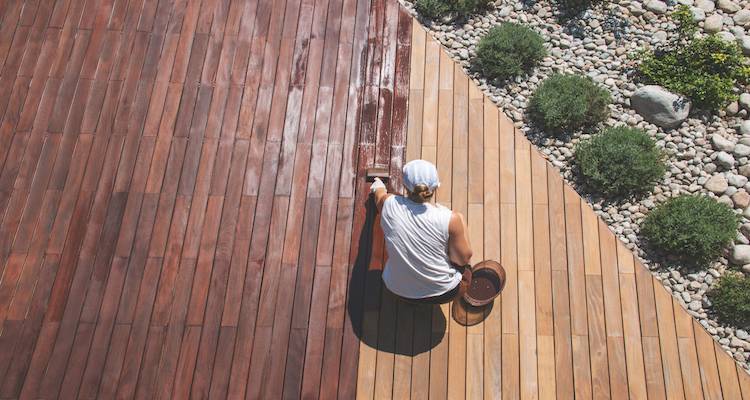
Here are some garden renovation tools you might need:
- Lawnmower - £40 to £300
- Chainsaw - £90
- Rake - £10 to £40
- Trowel - £5 to £20
Then, depending on the scope of your garden reno project, you'll need to account for your material costs:
- Real turf - £3.50 to £7 per m²
- Artificial grass - £12.50 per m²
- Patio slabs - £20 to £35 per m²
Additional Garden Renovation Costs
To make the most of your landscapers, it's wise to schedule other outdoor jobs at the same time. Here's what you might want to book in simultaneously:
Garden Decking
Garden decking costs £1,750.
This cost will vary based on the materials you select, the size of the decking, your location, and the length of the job.
You'll also need to factor in labour costs, which range between £120 and £200 per day.
How much it will cost for 5m² of decking, including materials and labour?
Garden Shed
Installing a wooden garden shed costs £1,020.
Building a Wall
Several factors influence the cost of building a brick wall in your garden. The two significant factors are the size of the wall and the type of bricks used.
On average, the cost of building a small garden wall is around £1,000.
Should I install a garden fence to separate my garden from my neighbours, or get a brick wall put in as this would seem stronger and last a good number of years?
Garden Fence
Garden fence installation costs are determined by two primary factors: the amount of fence that needs to be replaced, and the type of fencing chosen.
A full fence replacement will cost around £1,500.
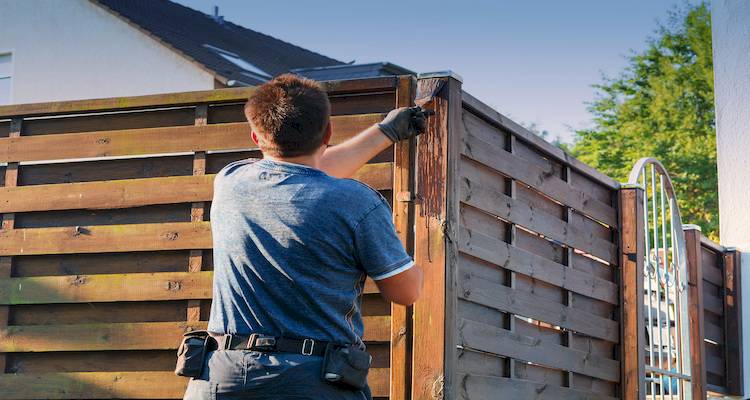
Laying Turf
New turf costs are relatively low - you can expect to pay between £3.50 to £7 per m².
I have a very small front garden. I would like it sorted out, as it's in fairly bad shape, so I guess it needs to be dug out and turned over with new turf. I was just quoted £560 - is this the average?
Garden Renovation Labour Costs and Timescales
Gardeners usually charge between £30 and £60 per hour.
This equates to around £110 and £180 per day.
Gardeners' hourly rates will vary according to their location in the UK, and their level of experience.
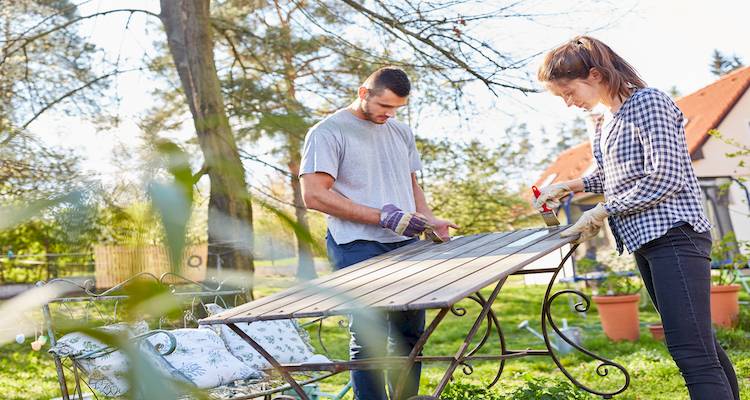
What about garden renovation timescales?
It can usually take 6 months to a year or more from the first meeting with a garden designer to a fully built and planted plot. There are various times of the year when garden renovations are complex because the weather affects the day's work, making the process longer.
The months of April and May are perfect for garden landscaping and tree planting, shrubs, and perennials. Your plants would have the chance to grow and adapt during the spring months before the summer and autumn.
A tiny back garden should take four months from the first meeting to the completed garden. Four weeks for layout, two weeks for construction company tendering, six to eight weeks for patience, and four weeks for construction.
Cost Factors of Renovating a Garden
Number of Tradespeople
Small jobs will only need one gardener, while larger jobs may require the use of two or three workers.
In these cases, your hourly labour cost would increase or triple depending on the number of contractors hired.
Location
Labourers charge higher rates in the southeast and London.
In contrast, contractors in Scotland, the north of England, and Northern Ireland typically offer lower rates.
What's Involved in Garden Renovation?
So you know what to expect, let's walk you through the steps of a garden renovation:
Remove All Waste from The Garden
The first step in garden regeneration is to clear out any old and worn outdoor furniture, structures, stones, and any weeds or damaged grass.
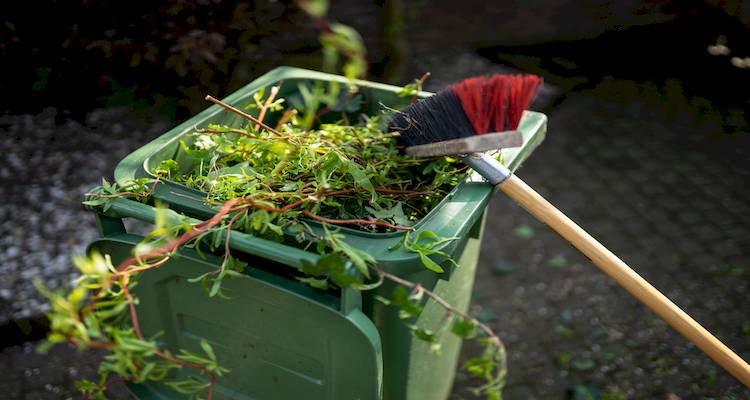
You may find that you generate a lot of waste during this stage, so it's worth renting a skip to control the waste in one place and have it removed from your site by a professional company.
Garden waste removal costs, on average, £200 depending on the volume of the waste.
Prep The Soil
Everything revolves around the quality of your soil.
Good quality soil is critical for providing grass and plants with the necessary nutrients to thrive, so the soil must provide water retention, organisms, minerals, organic material, and stability.
In addition, compost, grass, leaves, and manure can provide the organic matter that the soil requires to regenerate.
Planting seeds and creating flower features, in addition to your lawn, can add a pop of colour and beauty to your green spaces. Obtaining high-quality topsoil is critical to the success of any garden regeneration.
Clean Up Vegetation
Bushes and trees should be pruned.
Not only does this make them look neater now, it also encourages healthier growth in the future.
Be sure to check with your local planning authority if you intend to fell any trees to ensure they do not have attached protection orders.
Once these preparatory steps are complete, you can move on to start your garden renovation with a brand new garden design.
Can I Renovate a Garden Myself?
Having your garden professionally renovated can be an expensive project, making it tempting to DIY.
However, a DIY garden renovation is a great deal of work that will not be completed overnight.
While some smaller jobs, such as removing dead plants and cutting back small shrubs, may be possible as DIY projects, the bulk of the heavy work (e.g., hard landscaping, garden levelling, and tree felling) will need to be completed by a professional to ensure safety and compliance with regulations.
MyJobQuote can connect you with local gardeners for free, no obligation quotes, making it the easiest way to find reliable traders in your area.
Are there any government schemes for renovating my garden (at least partly) in the name of sustainability and being more eco-friendly?
Building Regulations & Planning Permission for Garden Renovation
Many garden renovations won't need planning permission - but this largely depends on what you're planning to do.
It's critical to be aware of the rules and regulations, as if you proceed with work that requires planning permission without getting it first, you may be forced to reverse or adjust the work.
Sheds
Timber sheds and outbuildings are frequently permitted development rights, so you usually won't have to submit a project proposal.
However, there are some prohibitions on these buildings.
They must be single-storey only, not be used as self-contained housing, and cannot cover more than 50% of the land surrounding the original house.
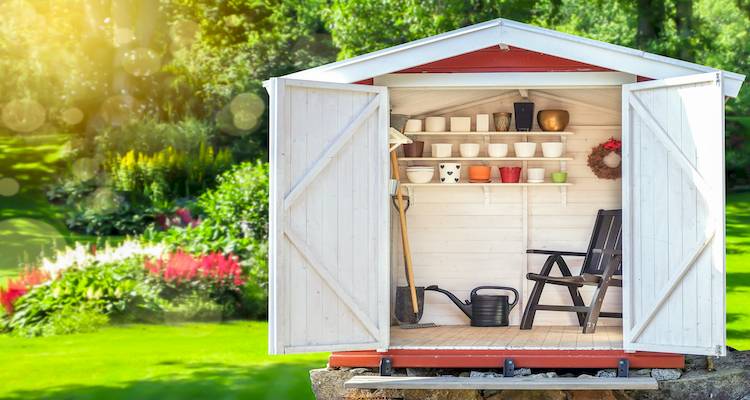
Driveways
Paved driveways are also subject to restrictions.
For example, if you use a permeable surface that allows water to run through, you won't need planning permission to place a new or replacement driveway.
This means that driveways made of gravel, permeable concrete blocks, or porous asphalt will not require planning permission.
However, if the area is bigger than 5m², or if you plan on using traditional non-porous surfacing, you must obtain planning permission.
Patios
Paving other house areas, such as the back garden, is usually not restricted.
However, if you intend to do extensive landscaping, you should check first. This would apply if you're adding a large patio and changing the height or slope of your garden.
Timber decking usually doesn't require planning permission if it's less than 30cm above the ground.
However, you will need planning permission if decking and other extensions cover more than 50% of the overall garden area.
Landscaping In General
Most of the other landscaping and gardening projects will not require planning permission.
For example, replanting or modifying flowerbeds, adding artificial and natural grass, or erecting a small patio are projects that do not need planning permission.
You should still consider the potential ecological effects of any landscaping or gardening projects, especially if the surrounding area contains protected species. You must also follow any Tree Preservation Orders (TPOs) that apply to trees on your property if you're planning on felling any.
Types of Garden Renovations
Garden renovations come in different shapes and sizes - let's take a look at what you can choose to do in your outdoor space:
Adding Decking
Installing decking is a great way to expand your outdoor living space, while increasing your home's curb appeal and value.
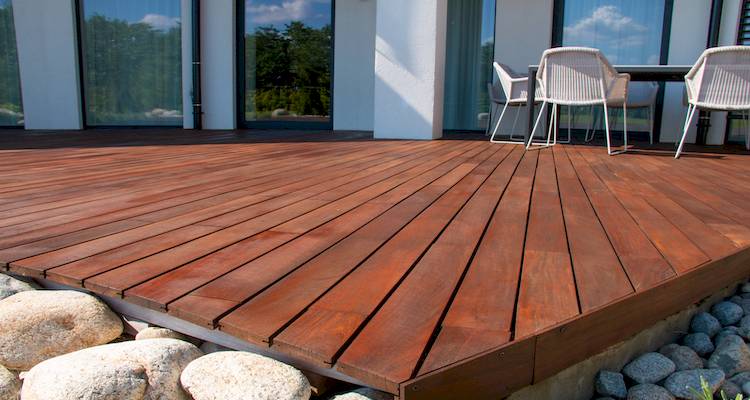
The cost of building a deck is determined by the area to be covered and the materials used. Wood is the least expensive material, but it is prone to being damaged by the elements and does not last very long, requiring maintenance.
Another option is plastic decking, durable and low maintenance, but can be less visually appealing.
Pros
- ✔ Garden decking comes in various options, including different materials and colours, giving a range of customisations.
- ✔ Quick to install compared to other garden additions, such as a stone patio, for instance.
- ✔ If installed correctly, garden decking can increase your home's value.
Cons
- ✖ Wood decking is not long-lasting and requires regular staining, sealing, and cleaning.
- ✖ Susceptible to weather damage if not properly maintained.
- ✖ Hardwood decking can be expensive, given the high upkeep required.
Adding Artificial Grass
Artificial grass has become increasingly popular because it has the same visual properties as natural grass, but requires far less maintenance.
However, the price is higher, and more preparation is required before it can be placed.

Pros
- ✔ No maintenance required (no mowing!), unlike real turf.
- ✔ Artificial grass gives off a quintessential "green" garden look.
- ✔ No watering or lawn maintenance is needed, reducing overall costs.
Cons
- ✖ Artificial turf is more expensive than real turf.
- ✖ Fake lawns can look just that - fake - and won't have a natural feel underfoot like real lawns.
- ✖ Artificial lawns can cause drainage issues due to the material.
Laying Natural Turf
A healthy, well-kept lawn is commonly an essential part of a garden renovation.
The cost of laying a new grass lawn is influenced by the turf's quality and the area's size.
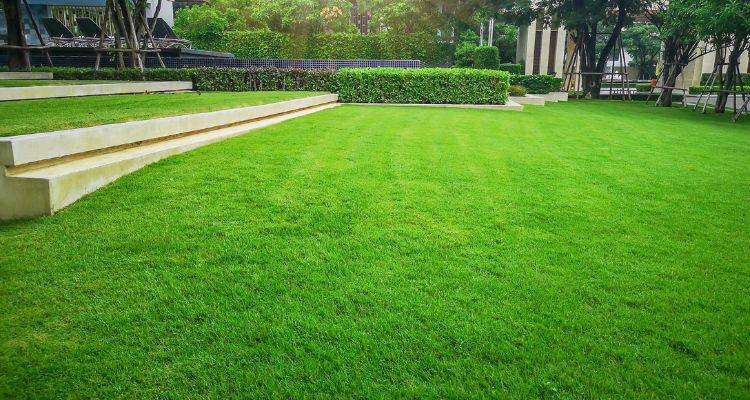
Pros
- ✔ Real turf is very affordable.
- ✔ Natural look and feel underfoot.
- ✔ Great for natural wildlife as a habitat.
Cons
- ✖ Real turf can be expensive to maintain, especially if you encounter issues with the lawn itself or if it develops diseases.
- ✖ High water consumption, which can be an issue during droughts.
- ✖ Natural lawns can get damaged over time in harsh weather conditions.
Gardening
Plant-filled Garden borders are essential to any garden renovation.
They're a great way to add colour, contour, aroma, and size to your outdoor space, connect sections, and create privacy. The cost of adding plants and trees to your garden varies widely depending on the types you choose and their size.
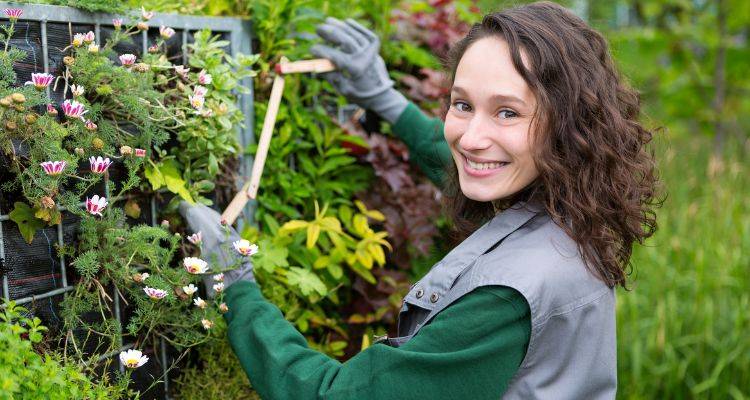
Pros
- ✔ Increases garden biodiversity, helping pollinators flourish.
- ✔ Potential to grow your own produce, such as fruit, vegetables, and herbs.
- ✔ Your garden will look lovely!
Cons
- ✖ Some gardens can be expensive to maintain, especially if they are larger than average.
- ✖ Requires manual labour to maintain, which might not be possible for everyone.
- ✖ Your garden is at the mercy of the outdoor elements, so you'll need to keep on top of the changing seasons.
Adding a Patio
A patio is just a simple and practical way to boost the use of your garden by providing a durable and multifunctional space for sitting and socialising.
Patios are typically priced by size, with a price per m² that differs depending on the material used.
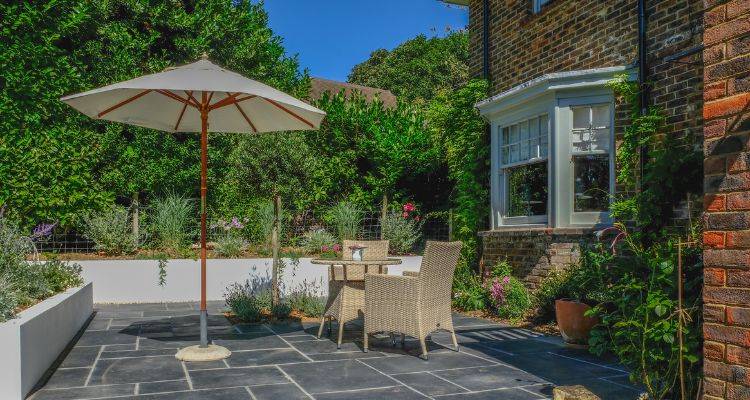
Pros
- ✔ Patios require far less maintenance than full lawns or decking.
- ✔ If installed correctly, patios can add value to your home.
- ✔ It provides you with a welcome place to relax in your garden.
Cons
- ✖ Patios carry a higher upfront cost than real turf or decking.
- ✖ If installed poorly, patios can cause drainage issues with water pooling on the surface.
- ✖ Slabs can crack over time due to changes in temperature and natural ground movement.
Checklist: Hiring a Garden Renovator Near You
When the time comes to get started on your garden renovation project, be sure to use MyJobQuote to find local gardeners for free, no obligation quotes.
Make sure you look at their credentials, noting their years of experience, and special knowledge in specific areas (e.g., patio laying, artificial turf, real grass, or garden levelling).
Lastly, be sure to check they have insurance before any work begins to make sure both parties are safe in the event of any issues during the project itself.






